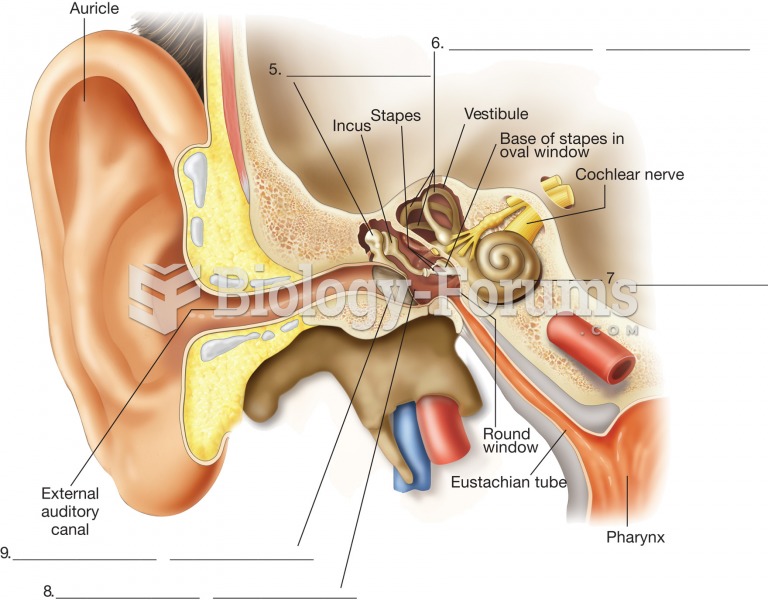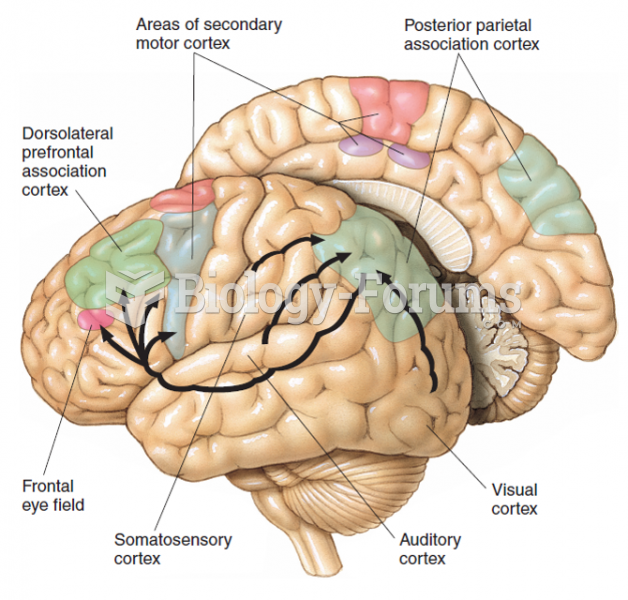|
|
|
Pubic lice (crabs) are usually spread through sexual contact. You cannot catch them by using a public toilet.
The people with the highest levels of LDL are Mexican American males and non-Hispanic black females.
Not getting enough sleep can greatly weaken the immune system. Lack of sleep makes you more likely to catch a cold, or more difficult to fight off an infection.
Human stomach acid is strong enough to dissolve small pieces of metal such as razor blades or staples.
Hippocrates noted that blood separates into four differently colored liquids when removed from the body and examined: a pure red liquid mixed with white liquid material with a yellow-colored froth at the top and a black substance that settles underneath; he named these the four humors (for blood, phlegm, yellow bile, and black bile).
 The primary ignition system is used to trigger and therefore create the secondary (high-voltage) ...
The primary ignition system is used to trigger and therefore create the secondary (high-voltage) ...
 A Bluetooth adapter that plugs into the DLC and transmits global OBD II information to a smart phone ...
A Bluetooth adapter that plugs into the DLC and transmits global OBD II information to a smart phone ...





